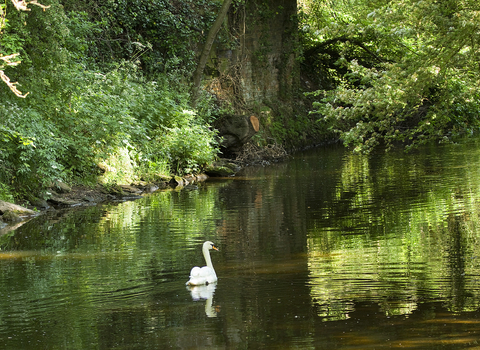
Friends of the River Arrow
River Arrow
River Arrow has a wonderful variety of habitats and native wildlife, including ponds, river, grassland and woodland. A circular, waymarked trail guides you around all this fantastic reserve has to offer. Look out for feature points and see what you can discover about this special place and its wildlife.
About River Arrow nature reserve
Designated as a Local Nature Reserve (LNR) in 1993 and the addition of the Abbey Field in 2002, the reserve is owned by Stratford District Council and carefully managed in partnership with Warwickshire Wildlife Trust to ensure the diversity of habitats remain and are enhanced. The reserve has interesting historical links to Ragley Mill and Alcester Abbey which date back to the middle ages. Evidence of which can be seen onsite today, including the weir which originally diverted water to the mill, via a leat.
Things to see
The winding banks of the River Arrow are edged with Willows, Alder, Oak and Hawthorn, which provide ideal perches for kingfishers. The sloping pebble beach provides prefect spots for reeds and other wetland plants, as well as offering an attractive feeding area for many birds and insects such as grey wagtails and several scare county beetles.
Things to do
- Walk - A circular, way marked trail takes visitors around a one mile loop, taking up to 30 minutes.
- Pause – Feature points dotted around the reserve in areas of high ecological or geological significance act as a reminder to pause, look and listen.
- Touch – Brass rubbing disks featuring local wildlife are attached to each way marker post.
- Look – View points along the river offer excellent wildlife sighting opportunities
- Eat – The reserve offers a number of picnic spots so why not stay a little longer and enjoy the sights and sounds of nature.
Waymarked Trail
1. Broad Bodied Chaser brass rubbing disk
From the main entrance to the site, follow the path down towards to pond. The pond, formed by the action of water rushing through the old floodgates, is an ideal habitat for frogs and newts. In the summer months you can spot a variety of water loving plants. Water boatmen and whirligig beetles swirl on the pool’s surface, while dragonflies and damselflies dart busily by. Take a moment to stop and see what you can spot.
2. Bank Vole brass rubbing disk
From the first way marker, follow the mown path to the right, walking away from the pond, with the hedgerow on your right into the South Field. Hedgerows form vital wildlife corridors for birds, insects and mammals to move from one area to another. They also provide cover, breeding areas and feeding sites. Mammals such as bank vole, harvest mouse and hedgehog nest and feed in the hedgerows. The Friends of River Arrow manage the hedgerows using traditional methods for the benefits of all kinds of creatures.
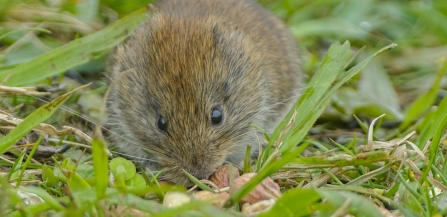
Credit John Bridges
3. Common Pipistrelle brass rubbing disk
The path now begins to turn left, directing you towards the river. As well as supporting small mammals such as voles and mice, the hedgerow also supports a number of bat species, such as the Natterer’s bat, which use them as green commuter routes for foraging and roosting.
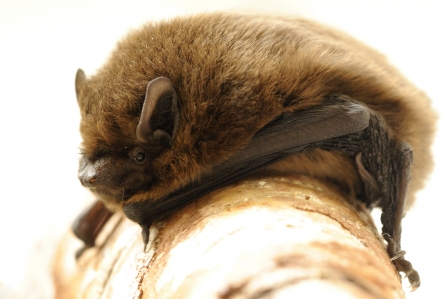
Amy Lewis / Wildnet
4. Grass Snake brass rubbing disk
As the path bends round on itself, you will have views of the river to the right. To your left, views over the meadow which supports a number of grassland species, including grass snake. Our largest snake, the Grass Snake, particularly likes wetland habitats, but can also be found in dry grasslands and in gardens, especially those with a pond nearby. Like all reptiles, Grass Snakes hibernate, usually from October to April. During the summer, they can be found basking near favourite ponds or even swimming.
A Black Poplar feature tree was planted in 2017 to add aesthetic and biological value to the reserve. Black Poplar was chosen due to its rarity and its particular value for moths.
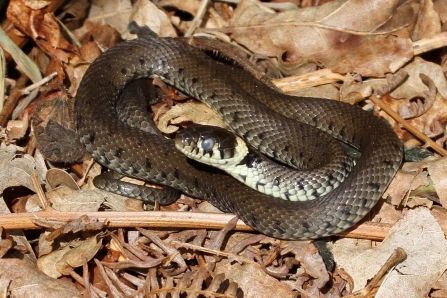
Credit Margaret Holland
5. Speckled Wood brass rubbing disk
The path through this part of the reserve hugs the river and takes you towards a wooden boardwalk. Keep an eye for Butterflies including Speckled Wood, Peacock and Red Admiral.
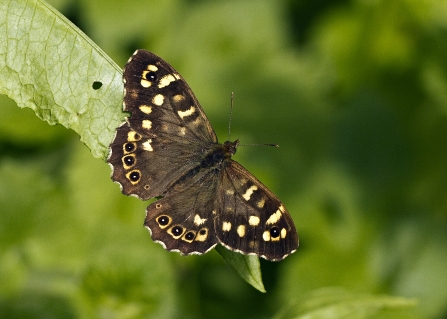
Credit Friends of the River Arrow
6. Oak Tree brass rubbing disk
Follow the path, with a cluster of Oak Trees to your left. In this area of woodland the iconic mature English Oak can be spotted amongst the tree cover. Mature oak trees are vitally important as they support more life forms than any other native tree, whether that be by providing food, directly or indirectly, as well as shelter and nesting sites.
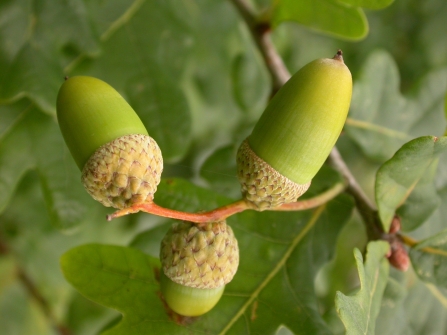
Philip Precey
7. Wildflower brass rubbing disk
Continuing into the meadow, the North Field has a great variety of grasses and wildflowers. In summer walk through the meadow and fill you head with the scents and sights of common sorrel, white yarrow flowers, bright yellow buttercups, yellow rattle seed and bird’s foot trefoil.
Friends of River Arrow
8. Kingfisher brass rubbing disk
From this way marker, you might like to take a slight diversion away from the way marked trail for views of the old Weir and the rushing River Arrow. The winding banks edged with Willows, Alder, Oak and Hawthorn provide ideal perches for kingfishers. In places the banks gives way to a slopping pebble beach which provides the perfect spot for reeds and other wetland plants as well as offering an attractive feeding area for many birds and insects such as grey wagtails and several scare county beetles. A great spot for wildlife encounters.
This area has an interesting history which dates back to the middle ages. The weir here would divert water to the Mill, via a leat. The Mill dates back to at least 1241 and has links to the monks of Alcester. It was converted for needle-making and renamed Ragley Mill in 1805. The mill eventually closed in 1920 and was used a farm build before being converted into dwellings in the 1980’s. The old Ragley Mill sits just off the present day reserve on private property.
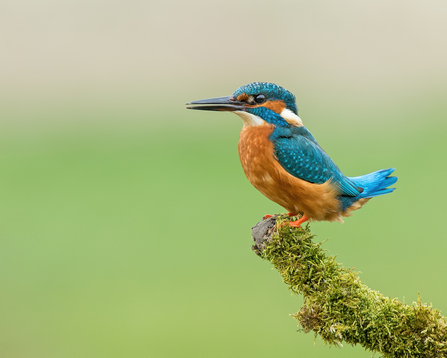
Credit Andrew Haynes
9. Ivy brass rubbing disk
The Oaks in this wood support dense growths of Ivy. Contrary to popular belief, the creeping plant is not a parasite and doesn’t harm the trees. The yellow green flowers are a great source of nectar for autumn insects including honeybees and red admiral butterflies. Ivy also provides roosting sites for bats and birds, and a home for hibernating insects like Brimstone butterflies.
Credit Philip Precey
10. Green Woodpecker Rubbing Disk
Alder and Willow dominate the wetter areas of woodland. Alder is the only British native deciduous, or broadleaf, tree to develop cones. These cones are the female catkins, which stay on the tree year round. Oaks support a variety of invertebrate species which in turn provide food for Woodpeckers and again, roosting spots for bats.
Sedges and rushes can be found amongst the ground flora. How to tell the difference between a sedges, grass and reed?
Reeds are round
Sedges have edges
Grasses are everything else!
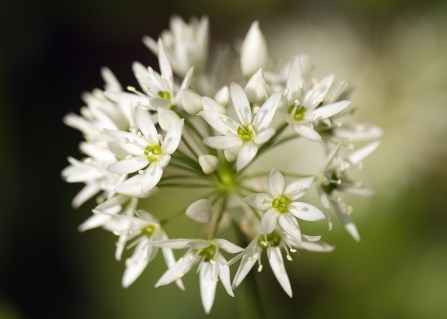
Credit Friends of the River Arrow
Print off a copy of the River Arrow wild walk route to take with you
How can I help?
The Friends of River Arrow nature reserve meet monthly on a Saturday morning to care and manage the reserve on behalf of Warwickshire Wildlife Trust. If you fancy trying something new, meeting like-minded people and being active, outdoors contact us on volunteer@wkwt.org.uk to find out more.


